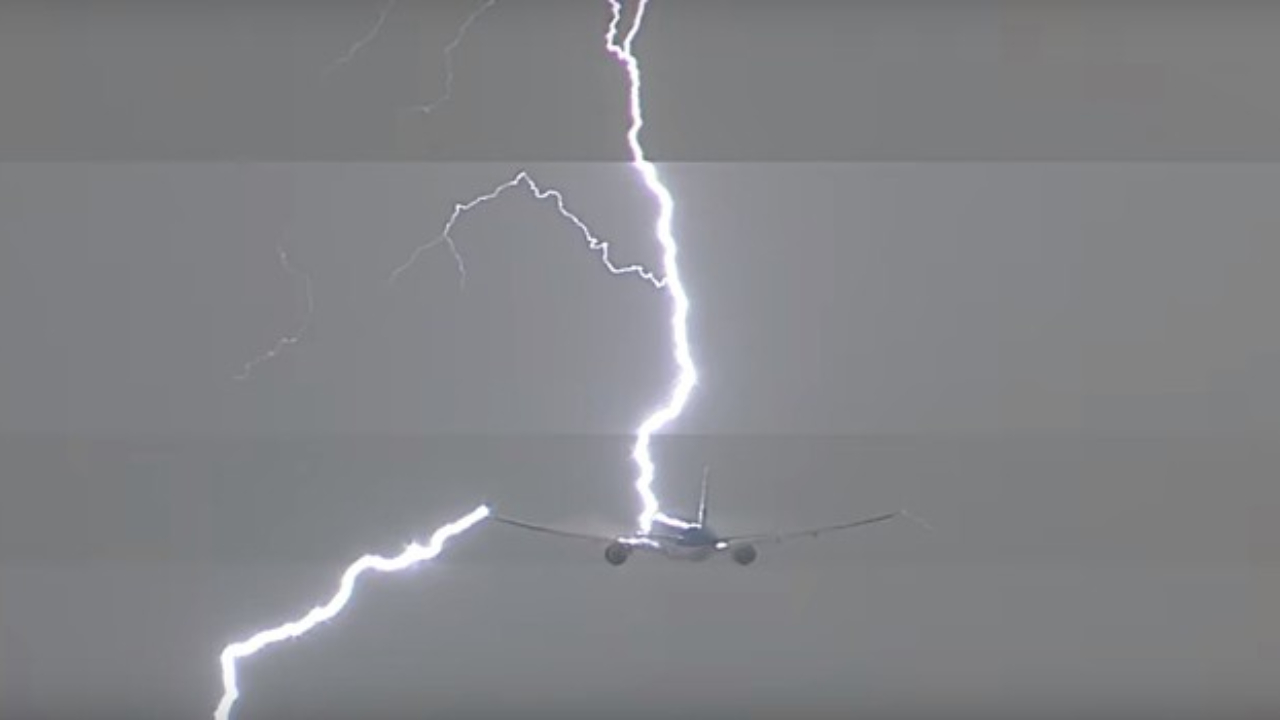Many people who travel by plane wonder: “If any negative situation occurs, how will the plane react or, in other words, will it crash?” There are various thoughts in style. However, it should not be forgotten that statistics show air travel as the safest form of transportation. So what happens if lightning strikes planes that are so assertive about safety and security? Let’s take a closer look at the subject.What happens if a plane is struck by lightning?Traveling thousands of meters above the ground amidst heavy rain, thunder and beams of light illuminating the sky seen when looking out the window can be eerie. In the meantime, the plane may be struck by lightning with an energy of 1 billion joules. But then the planes can easily land at their destination as if nothing had happened. So how do planes, which fly at an altitude of thousands of meters and are (rarely) exposed to such adverse weather events so closely, land safely?
But then the planes can easily land at their destination as if nothing had happened. So how do planes, which fly at an altitude of thousands of meters and are (rarely) exposed to such adverse weather events so closely, land safely?
Before going into the details of the subject, it is useful to explain the difference between lightning and lightning. Lightning is an electrical discharge that occurs between the earth and clouds and balances the electrical potential. Lightning is an electrical discharge between an electrically charged cloud and another cloud.
While the voltage values of lightning vary between 10-100 million volts, their temperatures can reach 40 thousand degrees Celsius. Lightning strikes, which travel at almost half the speed of light, occur approximately 8 million times a day on Earth. In addition to these statistics, when we consider the thousands of planes flying around the world every day as a result of the developing aviation industry, it is sometimes inevitable for planes to be hit by lightning.
With today’s technology, lightning strikes on aircraft cannot yet be prevented, but they can be protected from lightning without any damage. So much so that when we look at the history of aviation, the number of aircraft accidents whose main cause is lightning strikes is limited to a few.
So what is the system that protects planes from lightning?
The system that protects planes flying in the sky from a massive impact such as lightning is actually based on a very simple law of physics. This law is known as the Faraday Cage , discovered by physicist Michael Faraday in 1836 . The basic principle of the Faraday cage is that a closed conductive box protects its interior from strong electrical effects coming from the outside.

The energy generated by lightning strikes, which mostly strike aircraft during climb or descent, is released back into the atmosphere through discharge nozzles attached to various points of the aircraft, after being spread over the body of the aircraft, whose exterior is covered with conductive materials such as aluminum and built as a Faraday cage.
Meanwhile, the passengers inside can continue their journey without being affected by this huge energy flowing outside. Lightning strikes the plane generally from sharp parts such as the nose or wing tip. Most of the time, it leaves a coin-sized scar at the hit point. Generally, the damage it causes is less than 1 mm deep.
Although lightning strikes occur in large numbers and contain huge amounts of energy, the probability of adversely affecting air travel is very low. Therefore, having frightening thoughts and panicking about such meteorological events during travel would be unfair to the state-of-the-art aircraft designed to fly in many difficult conditions in the sky and to the pilots who are specially trained for many emergency situations in their cockpits.

How did you find out how airplanes, which are huge vehicles, are protected from lightning? You can share your thoughts and opinions on the subject with us in the comments section.














